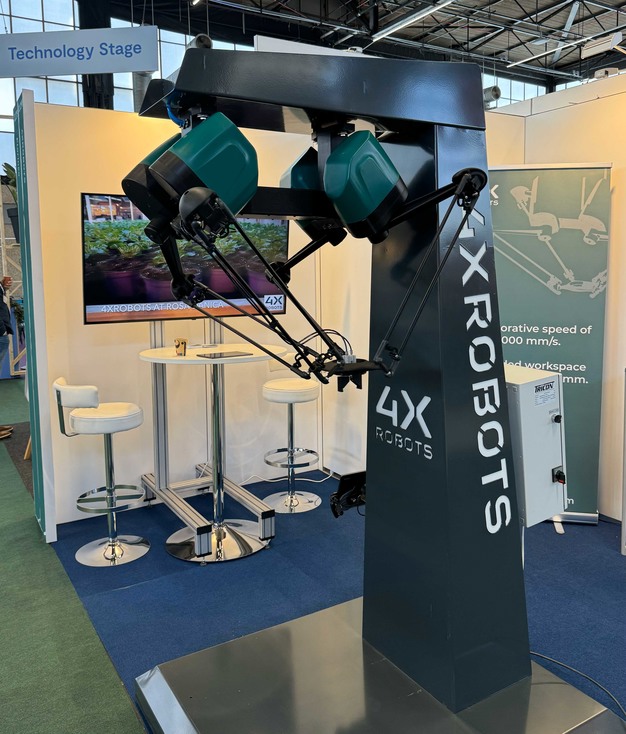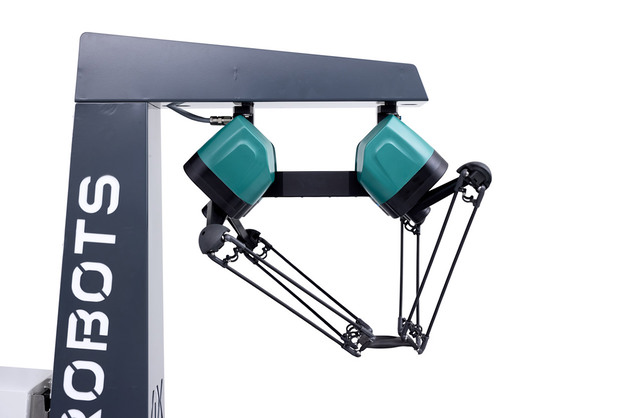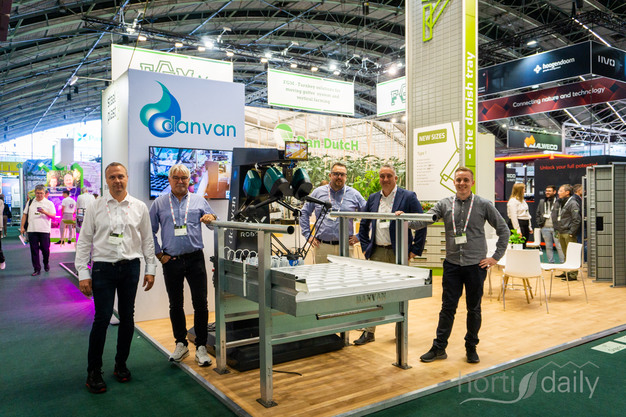Unlike traditional industrial robots, which are typically kept separate from human workers due to safety concerns, collaborative robots—or "cobots"—are designed to work safely alongside people. Michael Mortensen, Sales Director at 4XROBOTS, emphasizes that safety was a primary focus in the development of the recently launched 4X robot. "Every part of the 4X robot is designed to ensure maximum safety for people working next to it and to comply with all safety standards." With its compact design and relatively low weight, the robot is easy to move and integrate into different parts of greenhouse operations.

At the Rosa Danica nursery in Denmark, robots aren't taking over jobs; they're working alongside human workers. The 4X robot assists by placing plugs into pots: its plastic gripper grabs the plug and moves it into a pre-filled pot. The entire process takes less than two seconds, resulting in up to 2.500 picks per hour.

Jacob Sørensen, owner of Stål & Plast, active in producing irrigation systems for horticulture, saw an enormous potential in the industry for automation solutions that can work alongside human labor without compromising safety or disrupting workflows, but also realized traditional collaborative robots were too slow and too expensive to offer a viable return on investment.
"We took industrial robot designs and adapted them for greenhouses," Michael Mortensen with 4XROBOTS says. He references Delta robots, an industrial robot which typically feature three arms working in a parallelogram. "We added a fourth arm to extend the robot's working space." Despite the increased range from the fourth arm, the total weight of the robot is significantly lower than traditional models—just 35 kg. It also shows visually that it's a notably slim model. "Weak by design," Michael calls it—something that might sound negative but is actually one of its strengths, enabling it to work safely alongside humans. "The robot is designed with lightweight, flexible components and protective padding around its outer parts, which reduces impact force during collisions and the risk of injury during contact with humans," he explains. The collaborative safety features eliminate any safety concerns and allow your team to work alongside the robot. This is crucial in greenhouse operations, where workers often need to move quickly and interact with different machinery. "In general, the 4X robot will enter safety mode if its usual programmed patterns are disrupted," he adds, ensuring that human safety is never compromised.


In addition, the light weight makes the robot highly mobile, allowing it to be easily relocated within the production environment. This mobility is particularly useful in dynamic production environments, where growers frequently adjust layouts to optimize workflows or accommodate different crops. Michael further explains that the robot is designed to fit both new and existing production lines, offering easy implementation and scalability. "The robot can function as an independent collaborative unit or as part of a larger robotic system."
By now, the robot has placed thousands of pots at Rosa Danica, which allowed 4XROBOTS to use its facilities for testing the Beta version. This real-world testing enabled the company to refine the robot's capabilities, ensuring it meets the operational needs of commercial growers. However, Michael sees even more potential applications, thanks to its customizable grippers. "The robot can be fitted with application-specific grippers, enabling it to handle a large variety of cuttings, greens, plants, and fruits," he explains. This adaptability makes the robot suitable for diverse production settings that involve repetitive handling, including delicate crops that require a gentle touch to prevent damage.
Now commercially available after its launch at GreenTech 2024, 4XROBOTS is optimistic about the future. The robot's competitive price and quick return on investment have been well-received by the market, with strong interest from both end-users and large horticultural integration companies. "We received overwhelmingly positive responses at GreenTech," says Michael, adding he expects the 4X robot to play a crucial role in automating key tasks in horticulture, helping growers improve efficiency and reduce labor costs.
For more information:
Micheal Mortensen
Sales Director
4XROBOTS
[email protected]
www.4xrobots.com
